 The next topic in our look at car audio amplifier specifications is input sensitivity. This specification is easy to understand but is important to choose an amp that will work with the system your local car stereo shop has designed. In the simplest of terms, the sensitivity specification determines how much voltage is required on the input of the amplifier for it to produce full power. Let’s look at it in more detail.
The next topic in our look at car audio amplifier specifications is input sensitivity. This specification is easy to understand but is important to choose an amp that will work with the system your local car stereo shop has designed. In the simplest of terms, the sensitivity specification determines how much voltage is required on the input of the amplifier for it to produce full power. Let’s look at it in more detail.
Understanding Amplifier Input Sensitivity Range
Using our high-quality two-channel amp, our measurement equipment can show us just how much, or little, signal is required to produce a specific signal from the amp. We are going to use an output level of 10 watts for this example to keep our bank of load resistors cool and power supply happy.
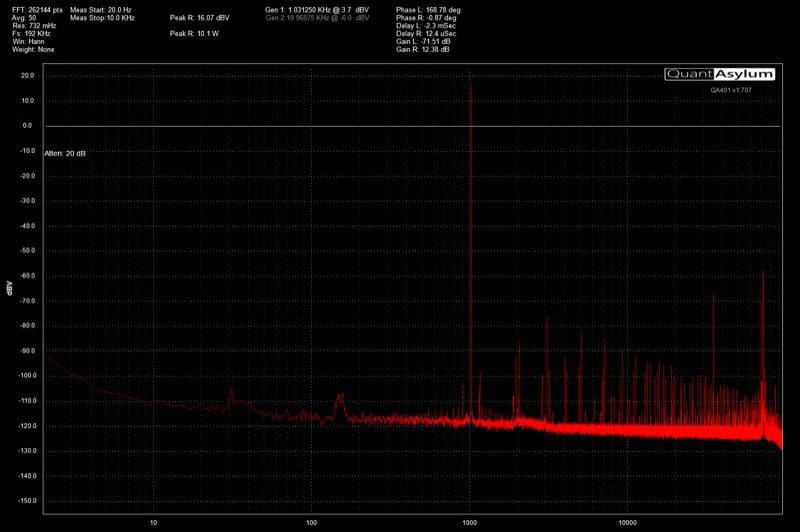
With the sensitivity controls set to their lowest level, our amplifier produces 10 watts of output (6.32 Vrms) from about 1.4 V of input signal. This ratio equates to a system gain of 12.34 dB.

With the sensitivity controls on the amplifier turned to their highest setting, the amp amplifier is capable of producing 10 watts of output (6.32 Vrms) from a mere 54 millivolts rms of signal. This ratio equates to a gain of 41.41 dB.
Why Does Amplifier Sensitivity Matter?
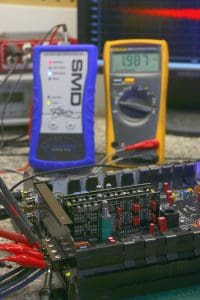 Being able to get full power from your amplifier from a variety of signal sources is important to ensuring that your installer can make that amp work with any source. If you have a high-quality aftermarket source unit, the preamp outputs should provide 2 or 4 Vrms of signal with the volume at maximum and a recording at 0 dB.
Being able to get full power from your amplifier from a variety of signal sources is important to ensuring that your installer can make that amp work with any source. If you have a high-quality aftermarket source unit, the preamp outputs should provide 2 or 4 Vrms of signal with the volume at maximum and a recording at 0 dB.
If you are trying to power an audio system from something like an iPod, you may find that the signal from the headphone jack peaks around 1 Vrms. I tested one of my iPod Nanos at 1.03 Vrms. This lower maximum level means you need more gain from your amplifier.
At the other end of the scale, you may want your installer to connect your amplifier to the speaker outputs of your factory radio or factory-installed amplifier. The voltage from these sources may be as much as 8 V from a radio and could be as high as 40 V from a high-powered factory subwoofer amp. In those cases, you need to choose an amp that has dedicated speaker-level inputs or implement some sort of level converter to reduce the signal to something that the amp can accept.
System Tuning with Input Sensitivity Controls
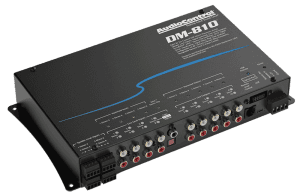 When it comes to having a fully active audio system installed in your vehicle, unless you choose to implement a stand-alone digital signal processor (DSP), you will want to choose an amp with a lot of adjustability so that your installer can use the sensitivity control to reduce the output of the amp for the tweeters and midrange speakers, relative to the subwoofers and mid-bass drivers. You may find it useful to choose an amp for your tweeters that doesn’t produce a lot of power. Less maximum power output capability will reduce the amount of gain designed into the amp and result in a system that is easy to balance.
When it comes to having a fully active audio system installed in your vehicle, unless you choose to implement a stand-alone digital signal processor (DSP), you will want to choose an amp with a lot of adjustability so that your installer can use the sensitivity control to reduce the output of the amp for the tweeters and midrange speakers, relative to the subwoofers and mid-bass drivers. You may find it useful to choose an amp for your tweeters that doesn’t produce a lot of power. Less maximum power output capability will reduce the amount of gain designed into the amp and result in a system that is easy to balance.
We would strongly recommend using a DSP since it enables you to configure crossover and output level adjustments quickly, but we understand that every audio system upgrade has budget limits. You can always upgrade later.
A Comment on Background Noise
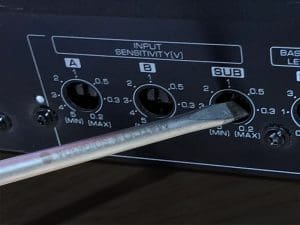 If you have understood this article fully, then you realize that more signal from your source unit doesn’t necessarily represent an ability for your amplifier to produce more power, assuming the input sensitivity control is adjusted properly.
If you have understood this article fully, then you realize that more signal from your source unit doesn’t necessarily represent an ability for your amplifier to produce more power, assuming the input sensitivity control is adjusted properly.
Years ago, when aftermarket source units with high-voltage preamp outputs were introduced, some companies marketed them as allowing stereo systems to play louder. If you didn’t adjust the sensitivity controls on your amp, this was a true statement.
The real benefit of a strong preamp signal is that you can turn down the gains on your amp and subsequently reduce the background noise in your system. Look at the difference in background noise of our high-end audio amp with the gain set at minimum and at maximum. Not all amps perform this well. As long as you can get full power from your amp, less gain means less background noise.
Choose an Amp That Works with Your Car Audio System
In most cases, the name-brand amplifiers available on the market today have the input voltage flexibility required to work in almost any application. Your local mobile enhancement retailer would be happy to work with you to pick a solution that will maximize the performance of your system.
This article is written and produced by the team at www.BestCarAudio.com. Reproduction or use of any kind is prohibited without the express written permission of 1sixty8 media.
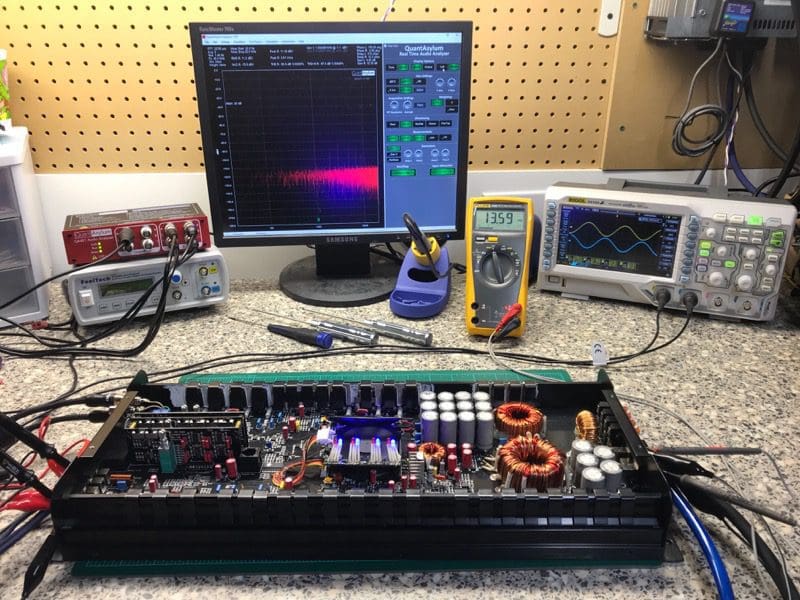 Welcome to our new series about understanding product specifications. Our goal in these articles is to help you understand what the
Welcome to our new series about understanding product specifications. Our goal in these articles is to help you understand what the 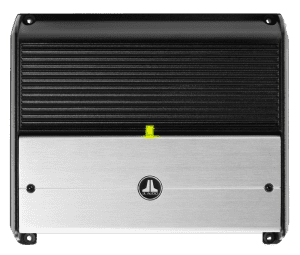 Without a doubt, the most popular specification that consumers look at when purchasing a car audio amplifier is its power rating. An amplifier takes the small signal from your source unit and increases it in voltage and current to drive a low-impedance speaker. In a nutshell, the more power you have, the more loudly you can play your car stereo system before the signal going to the speakers distorts. The limit of how much power is required is determined by the power handling specifications of the speakers in the vehicle, their cone excursion limits and their
Without a doubt, the most popular specification that consumers look at when purchasing a car audio amplifier is its power rating. An amplifier takes the small signal from your source unit and increases it in voltage and current to drive a low-impedance speaker. In a nutshell, the more power you have, the more loudly you can play your car stereo system before the signal going to the speakers distorts. The limit of how much power is required is determined by the power handling specifications of the speakers in the vehicle, their cone excursion limits and their 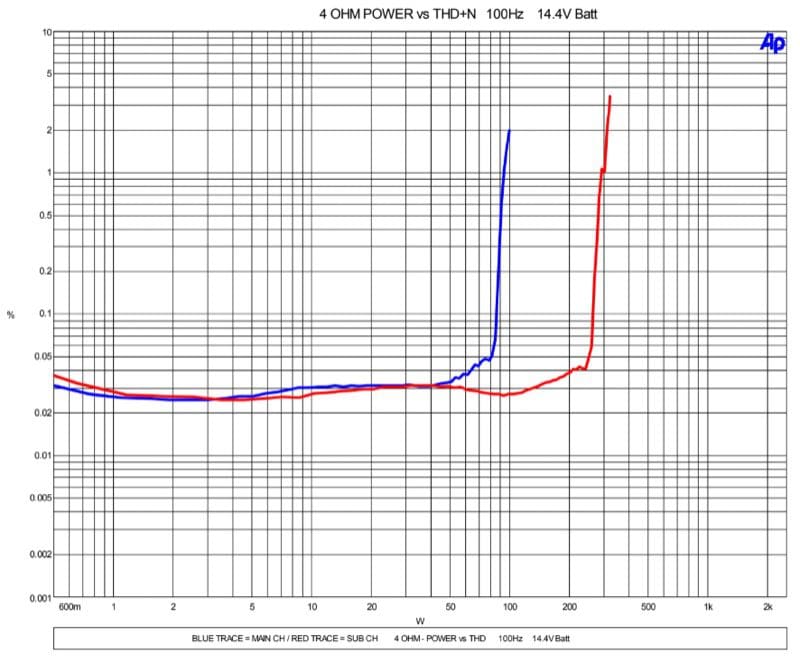
 In layman’s terms, the amp must perform as well producing bass as it does high-frequency information, and the specified power rating cannot include large amounts of distortion. While the 14.4V rating is somewhat high, it establishes a level playing field from which consumers can compare results.
In layman’s terms, the amp must perform as well producing bass as it does high-frequency information, and the specified power rating cannot include large amounts of distortion. While the 14.4V rating is somewhat high, it establishes a level playing field from which consumers can compare results. If you don’t see the CTA-2006 logo associated with a product you are considering, there are several ways that the numbers may not be directly comparable with other options. One easy way to inflate numbers is to increase the supply voltage to the amp. Depending on the design of an amplifier’s power supply, each additional volt provided to that power supply could theoretically increase the amplifier’s output by about 0.6 dB. That would be like a 100-watt amp being able to make about 115 watts.
If you don’t see the CTA-2006 logo associated with a product you are considering, there are several ways that the numbers may not be directly comparable with other options. One easy way to inflate numbers is to increase the supply voltage to the amp. Depending on the design of an amplifier’s power supply, each additional volt provided to that power supply could theoretically increase the amplifier’s output by about 0.6 dB. That would be like a 100-watt amp being able to make about 115 watts.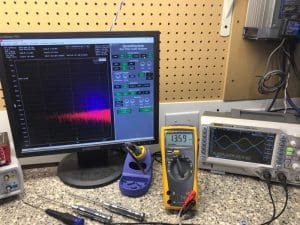 If you are shopping for an amplifier, the power rating does nothing to tell you about the quality of one amplifier compared to another. You don’t need 100 watts to drive your tweeters and you certainly won’t be happy with a 25-watt amp driving a subwoofer in your car.
If you are shopping for an amplifier, the power rating does nothing to tell you about the quality of one amplifier compared to another. You don’t need 100 watts to drive your tweeters and you certainly won’t be happy with a 25-watt amp driving a subwoofer in your car.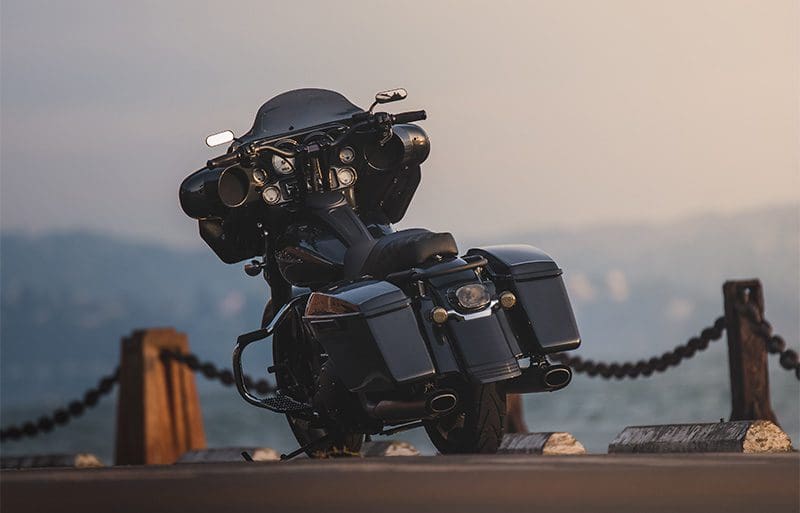 If you are an avid car audio enthusiast, it’s likely that you’ve seen photos of or heard systems that use high-efficiency pro audio style speakers. These drivers were designed for PA systems at concerts and can produce impressive output levels with moderate levels of power from an amp. In this article, we are going to look at the benefits and drawbacks of using pro-sound speakers in applications like a
If you are an avid car audio enthusiast, it’s likely that you’ve seen photos of or heard systems that use high-efficiency pro audio style speakers. These drivers were designed for PA systems at concerts and can produce impressive output levels with moderate levels of power from an amp. In this article, we are going to look at the benefits and drawbacks of using pro-sound speakers in applications like a 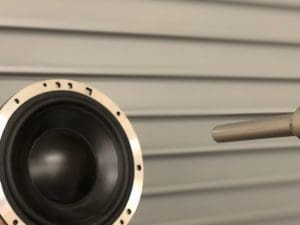 Before we dive into the differences between conventional car audio speakers and high-efficiency speakers, let’s take a quick look at the definition of speaker efficiency and what design features change this value.
Before we dive into the differences between conventional car audio speakers and high-efficiency speakers, let’s take a quick look at the definition of speaker efficiency and what design features change this value. Several technical design details determine speaker efficiency. One of the biggest factors is the weight of the cone and voice coil assembly. A lightweight cone assembly is easier to move and typically produces more output with less power. The drawback of this low-mass design is that the resonant frequency of the speaker will be higher and the driver won’t produce anywhere as much bass. This is the basic trade-off between conventional car audio speakers and pro-sound drivers.
Several technical design details determine speaker efficiency. One of the biggest factors is the weight of the cone and voice coil assembly. A lightweight cone assembly is easier to move and typically produces more output with less power. The drawback of this low-mass design is that the resonant frequency of the speaker will be higher and the driver won’t produce anywhere as much bass. This is the basic trade-off between conventional car audio speakers and pro-sound drivers.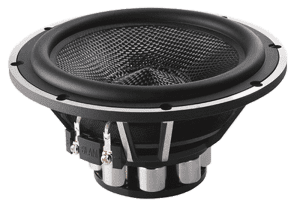 Let’s compare two popular 6.5-inch woofers, both intended for car audio applications. Speaker A is a conventional
Let’s compare two popular 6.5-inch woofers, both intended for car audio applications. Speaker A is a conventional 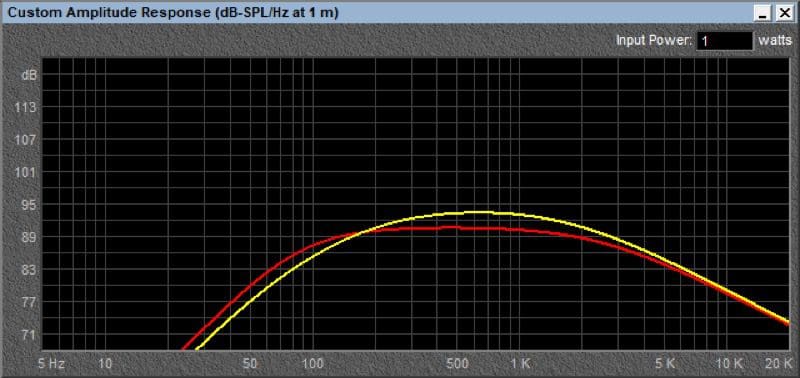

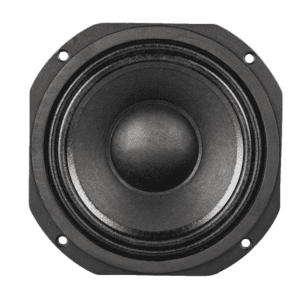 If you have plans to add a dedicated woofer to the saddlebag or trunk on your bike, and can find one that will play up to 150 or 200 Hz without significant distorting, then pro-style high-efficiency speakers may be a good option if all that matters is how loudly the system will play.
If you have plans to add a dedicated woofer to the saddlebag or trunk on your bike, and can find one that will play up to 150 or 200 Hz without significant distorting, then pro-style high-efficiency speakers may be a good option if all that matters is how loudly the system will play.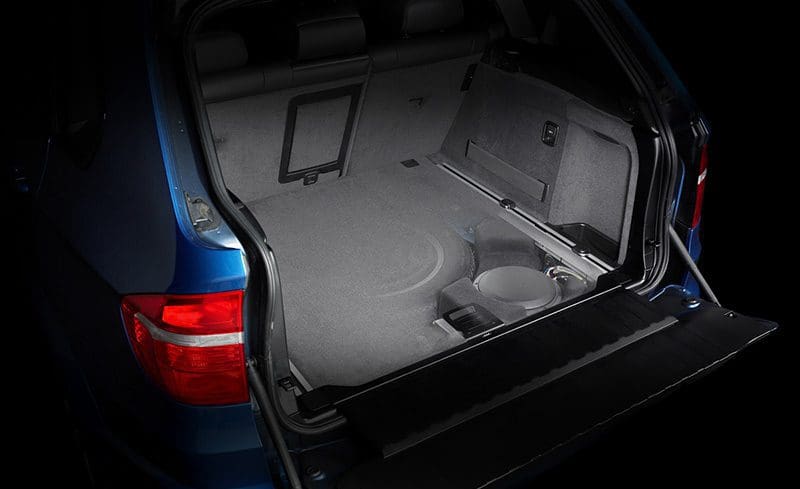 Did you know that in Europe, there aren’t nearly the number of qualified
Did you know that in Europe, there aren’t nearly the number of qualified 
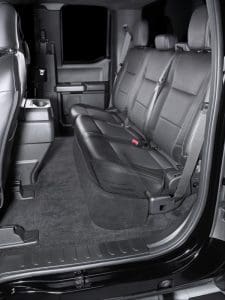 When you say the word subwoofer to someone, they often envision someone driving down the street with a wall of woofers, shaking windows and being otherwise annoying. The reality is, adding a subwoofer to even a premium
When you say the word subwoofer to someone, they often envision someone driving down the street with a wall of woofers, shaking windows and being otherwise annoying. The reality is, adding a subwoofer to even a premium 
